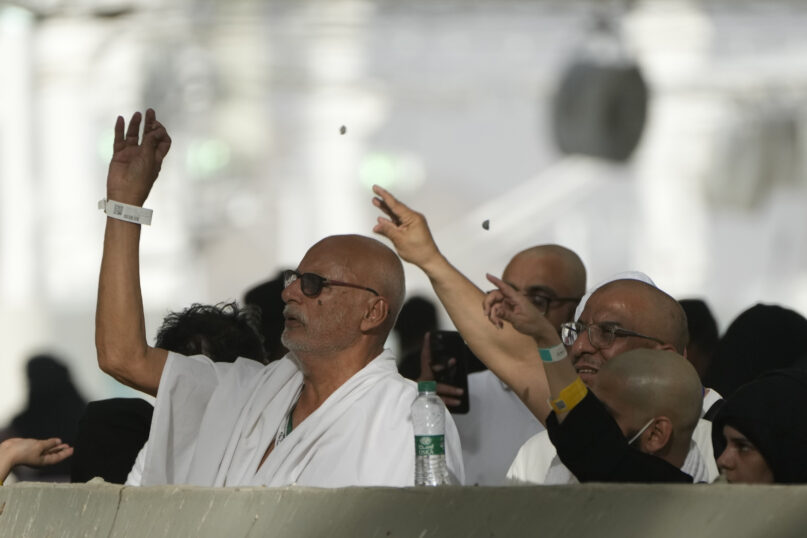MINA, Saudi Arabia (AP) — Hundreds of thousands of Muslim pilgrims on Wednesday braved intense heat to perform the symbolic stoning of the devil during the Hajj pilgrimage in Saudi Arabia.
With morning temperatures rising past 42 degrees Celsius (107 degrees Farenheit), huge crowds of pilgrims walked or took buses to the vast Jamarat complex just outside the holy city of Mecca, where large pedestrian bridges lead past three wide pillars representing the devil.
Using pebbles collected the night before at a campsite known as Muzdalifa, the pilgrims stone the pillars. It’s a reenactment of the story of the Prophet Ibrahim — known as Abraham in Christian and Jewish traditions — who is said to have hurled stones at Satan to resist temptation.
The ceremony was marred by tragedy on a number of occasions in the 1990s and 2000s, when hundreds died in stampedes during the stoning ritual. Saudi authorities have since built an expanded network of massive pedestrian bridges and redesigned the site to make it safer for pilgrims.
This year, the biggest danger might be the heat.
Temperatures soared past 45 degrees Celsius (113 F) on Tuesday, as Muslims marked the spiritual high point of the pilgrimage by spending the day praying at Mount Arafat, where there was no breeze and almost no shade.
Pilgrims huddled under umbrellas, dousing themselves with bottled water. Cellphones were almost too hot to hold and shut down after just a few minutes of use.
Saudi authorities have deployed tens of thousands of health workers for the pilgrimage and volunteers were handing out water. More than 6,700 pilgrims have been treated for heat exhaustion or heat stroke since the start of the pilgrimage, said Dr. Muhammad Al-Abdel Ali, a Health Ministry spokesman.
The annual Hajj pilgrimage is one of the five pillars of Islam, and all Muslims are required to undertake it at least once in their lives if they are physically and financially able. For the pilgrims it is an unrivalled religious experience that wipes away sins, bringing them closer to God and face-to-face with fellow Muslims from all corners of the earth.
The last three days of the Hajj coincide with Eid al-Adha, or the Feast of the Sacrifice, a joyful occasion in which Muslims around the world sacrifice sheep or cattle and distribute some of the meat to the poor. The holiday commemorates Ibrahim’s willingness to sacrifice his son Ishmael on God’s command. In Christian and Jewish traditions, Abraham is willing to sacrifice his other son, Isaac.
The holiday, which is held according to Islam’s lunar calendar, depending on the sighting of the moon, began Wednesday in several Middle Eastern countries and will begin Thursday in some Asian countries.
The Saudi royal family has invested billions of dollars in infrastructure to maintain Islam’s holiest sites and to hold the annual pilgrimage, which is a major source of its legitimacy. Crown Prince Mohammed bin Salman, the kingdom’s de facto ruler, traveled to Mecca on Tuesday to oversee the pilgrimage, according to state-run media.
This is the first Hajj to be held without COVID-19 restrictions since the onset of the pandemic in 2020. Authorities had expected some 2 million pilgrims, but official figures released late Tuesday showed that around 1.8 million were taking part in the pilgrimage. That’s considerably fewer than the nearly 2.5 million who came in 2019. Worldwide economic woes may have been a factor.





